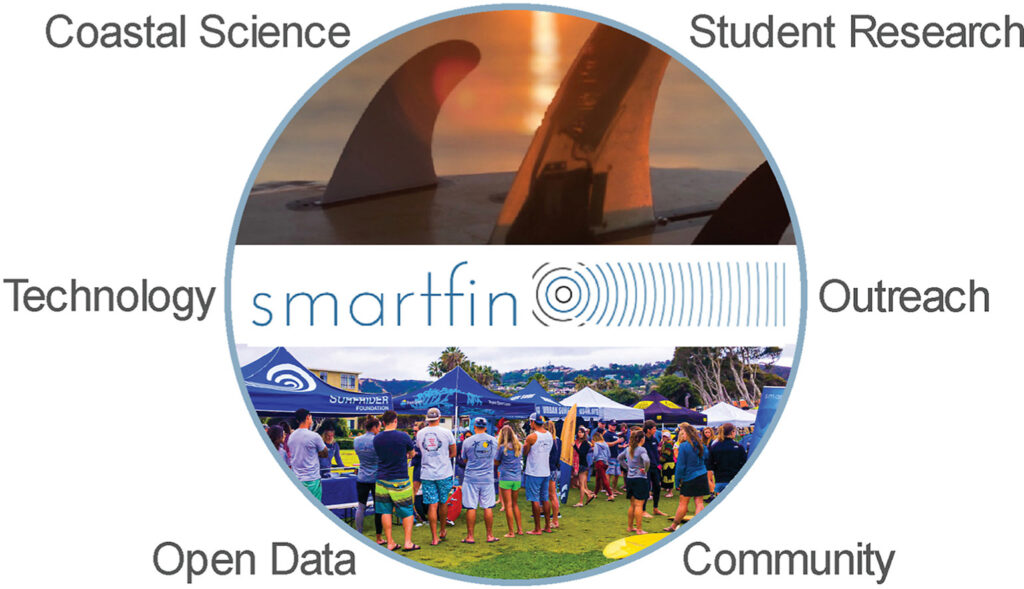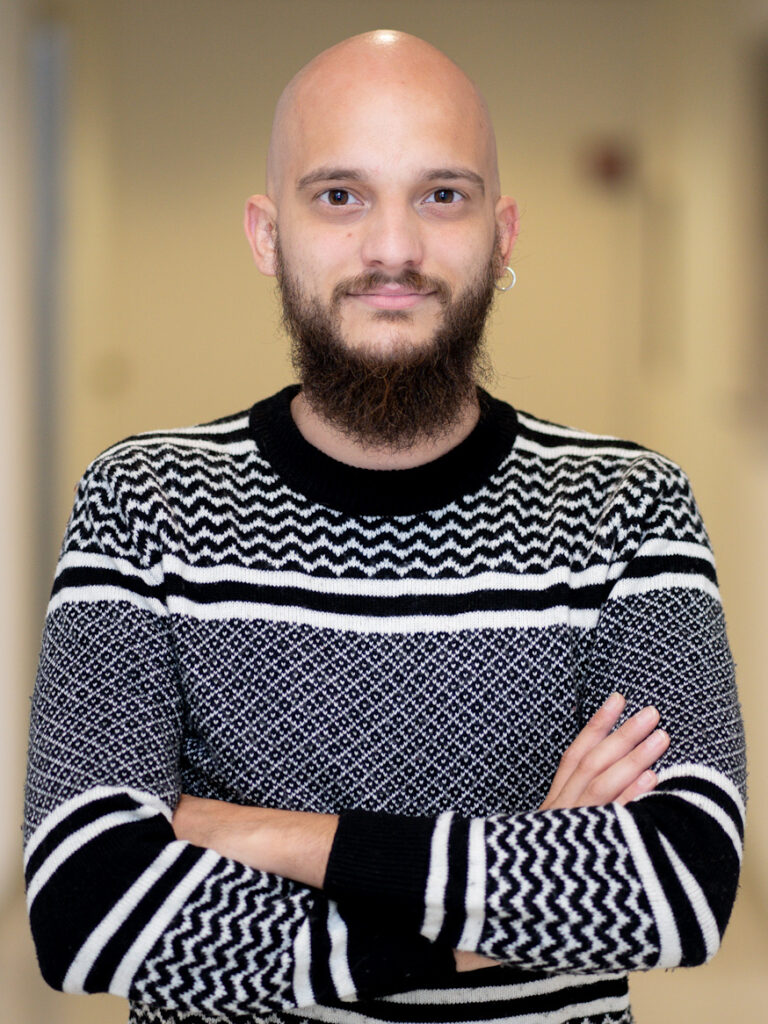Congratulations to Colin Drewes for being awarded the 2022 UCSD Department of Computer Science and Engineering MS Research Award. Colin worked in our research group for almost three years – first as a CS undergraduate and during the past year as an CSE MS student. He was the de factor leader on one of our major research projects – a large multi-institution project between UCSD, University of Washington, and Georgia Tech Research Institute. The results of this project are an impressive string of publications (a couple still pending). Colin continues his graduate career as PhD student at Stanford University working with Caroline Trippel starting this Fall. Colin – you will be missed. Best of luck at Stanford!
RAGE Best Presentation Award
Congratulations to Andy Meza for giving the best presentation at the Real-Time and Intelligent Edge Computing Workshop co-located with the Design Automation Conference. Andy presented our research on “Safety Verification of Third-Party Hardware Modules via Information Flow Tracking” a collaborative project with Francesco Restuccia and Jason Oberg from Cycuity. The work describes how to use information flow tracking to verify the safety of bus interactions among on-chip hardware resources.

Dr. Peter Tueller Rocks His PhD
A long overdue congratulations to Dr. Peter Tueller for successfully defending his Ph.D.
Peter joined our group in Fall 2016 despite me doing one of the worst recruiting jobs ever. He was doing outstanding undergraduate research to build a fleet of underwater vehicles. Around the same time, we were developing localization algorithms for swarms of underwater vehicles. It seemed like a perfect fit! I saw his UCSD graduate application many times — several colleagues forwarded it to me saying that I should make sure not to miss it. At the time I was on a sabbatical and not looking to take on more students. After the third or fourth time of someone telling me I should check out his application, I finally got around to it. I made him a very late offer, which was right before visit day. I asked if he could come and stick around another day so that I could meet him as I was traveling during the official visit days (again, I wasn’t planning on taking students that year).
Our first meeting still sticks in my mind. We met up at a taco restaurant in La Jolla Shores. I figured I didn’t have much of a shot at convincing him to come to UCSD. I was apologizing for making a late offer, not being a visit day, etc., but also trying my best to convince him that I was still really interested in working with him. I was doing a terrible job of recruiting him. But he rather nonchalantly stated that he was planning to come to UCSD. Lucky me!
Peter had a Ph.D. career that I will forever be jealous of. He spent a couple of months at the University of Haifa in Israel working with Roee Diamant on an underwater sonar project. He made expeditions to Guatemala to perform 3D scanning at the archaeological sites of El Zotz and Tikal. He worked most summers at NIWC Pacific developing different underwater technologies. He was the leader and driving force behind getting the FishSense project up and running. He got a SMART scholarship that allowed him to pursue Ph.D. research largely of his choosing related to 3D vision systems. This allowed him to move directly into a job at NIWC after graduation, which was what he wanted to do all along.
And all of this was done as a second career to being a rock star.
Despite being a rock star, Peter was a cool and calming influence on our group. I always looked forward to our weekly meetings — great research discussion and lots of laughs. He was a tremendous mentor to undergraduates and the other new members of our research group.
Congrats Dr. Tueller! You will be missed. Keep on rocking!
Engineering a Smarter Surfboard
The Smartfin project was highlighted in a ThisWeek@UCSD article. The Smartfin holds a microcontroller, temperature sensor, inertial measurement unit, and wireless radio — all embedded into a surfboard fin. This allows surfers to opportunistically gather oceanographic data in the near-shore environment, which is otherwise challenging for more traditionally sensors on buoys and moorings. Engineers for Exploration students are working this summer as part of the NSF-funded REU Site to solidify the data collection process, and develop in-house ability to manufacture Smartfins in a low-cost and open-source manner.

Exploiting the AMBA AXI Protocol for Denial of Service Attacks
Francesco Restuccia was invited to give a talk at the June 2022 edition of hardware.io — a conference dedicated towards showcasing novel hardware attacks and training the security community to defend against those attacks. Francesco’s talk details how the popular on-chip communication protocol is prone to attacks against the security and safety of on-chip resources. The attacks take advantage of inadequacies in the protocol, which was developed for high-speed communications, and not necessarily designed with safety and security in mind. For more details, check out his talk in its entiretly.
Scaling Hardware Security Property Generation
One of the biggest challenges in hardware security verification is developing formal properties that can subsequently be verified by automated tools. This is a difficult and time-consuming task typically assigned to security verification engineers that must manually sort through hundreds of thousands of lines of a hardware description.

Our recent article in IEEE Security & Privacy Special Issue on Formal Methods at Scale describes our research on developing Isadora – a tool that automates the property generation process for information-flow properties that are critical to the security of hardware designs. Isadora combines information flow tracking with specification mining to help automate the challenging security verification process. Congrats to the authors: Calvin Deutschbein, Andy Meza, Francesco Restuccia, Ryan Kastner, and Cynthia Sturton.
Olivia Weng Named NSF Graduate Research Fellow

Congratulations to Olivia Weng for being awarded a National Science Foundation Graduate Research Fellowship. The NSF GRF is one of the most prestigious graduate fellowships in the US. The fellowship will fund Liv for the remainder of her PhD allowing her to continue her research on the co-design of efficient, fault-tolerant computer architectures for applications in high-energy physics. One example is the Large Hadron Collider, where physicists need hardware that will process millions of particle collisions per second. Her research will allow their hardware, and the machine learning software that runs on it, to meet these intense computing demands while handing faults that are inherent in such sensors.
Smartfin turns Surfers into Citizen Scientists
Smartfin is an oceanographic sensor–equipped surfboard fin and citizen science program aimed to provide an increase of coastal ocean observations. Smartfins are used by surfers and paddlers in surf zone and nearshore regions to provide valuable oceanographic data in these challenging to sample ecosystems. Smartfin measures temperature, motion, and wet/dry sensing, GPS location, and cellular data transmission capabilities for the near-real-time monitoring of coastal physics and environmental parameters.

Over 300 Smartfins have been distributed around the world and have been in use for up to five years. The technology has been proven to be a useful scientific research tool in the coastal ocean—especially for observing spatiotemporal variability, validating remotely sensed data, and characterizing surface water depth profiles when combined with other tools—and the project has yielded promising results in terms of formal and informal education and community engagement in coastal health issues with broad international reach.
Our recent research article in the Continental Shelf Research journal describes the technology, the citizen science project design, and the results in terms of natural and social science analyses. We also discuss progress toward our outreach, education, and scientific goals. Congrats to Phil Bresnahan and all the authors!
Sherlock: Quickly Understanding Design Spaces
Design space exploration aims to quickly determine the design parameters that yield the best results. In software, the designer must set algorithmic and performance parameters, e.g., thresholds, bounds, and other input parameters that provide the best output in terms of accuracy and runtime. In hardware design, the designer must determine parameters related to pipelining, memory architecture, and data types to give the best tradeoff between resource usage and performance. In both cases, one wants to quickly understand the relationship between the input and outputs and find the Pareto set of designs.

Sherlock is a DSE framework that can handle multiple conflicting optimization objectives and aggressively focuses on finding Pareto optimal solutions. Sherlock integrates a model selection process to choose the regression model that helps reach the optimal solution faster. Sherlock designs a strategy based around the Multi-Armed Bandit (MAB) problem, opting to balance exploration and exploitation based on the learned and expected results. Sherlock can decrease the importance of models that do not provide correct estimates, reaching the optimal design faster. Sherlock is capable of tailoring its choice of regression models to the problem at hand, leading to a model that best reflects the application design space
“Sherlock: A Multi-Objective Design Space Exploration Framework” was recently published in the ACM Transactions on Design Automation of Electronic Systems (TODAES). Congrats to the authors Quentin Gautier, Alric Althoff, Chris Crutchfield, and Ryan Kastner. The Sherlock algorithm was also released as open-source. We plan to use it in the future to tune machine learning models for optimized hardware implementations and tune algorithmic parameters for aerial tracking project. We hope that others will find is similarly useful!
CSE Postdoc Fellow
Dr. Francesco Restuccia was awarded a UCSD CSE Postdoc Fellowship to return to UCSD to develop safe and secure system-on-chip architectures.

Francesco is very familiar with UCSD (and vice versa). He spent about 9 months here as a visiting PhD student from January – August 2020. Despite much of his time here being under lockdown, he was incredibly productive. Francesco developed the Aker security verification framework for system on a chip (SoC) access control that was published in ICCAD 2021. Additionally, Francesco worked on another project to develop a makeshift ventilator system in response to the pandemic (see IEEE Embedded Systems Letter for more info).
Francesco will continue his work on developing safe and secure electronic systems, in particular, we aim to explore the use of program synthesis for secure system generation in collaboration with Sean Gao and Nadia Polikarpova. Be on the look out for some more VeriSketch-like research lead by Francesco.
Welcome back Francesco!